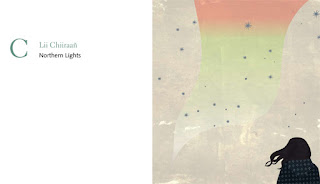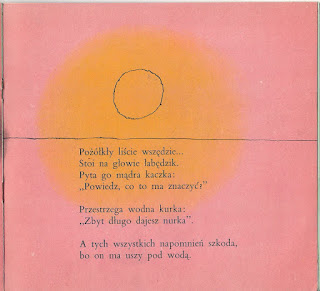Thursday, 12 November 2015
Sunday, 23 August 2015
Artist: Attributed to Wacochachi (Native American, Meskwaki, Iowa, active 1820–50)
Date: ca. 1830
Paper, ink, sealing wax
9 3/4 in. (24.8 cm) Width: 15 1/2 in. (39.4 cm)
via: www.metmuseum.org
Labels:
drawing,
ink drawing,
Iowa,
Meskwaki,
meskwaki nation,
Wacochachi
Friday, 21 August 2015
from Cricket Songs: Japanese Haiku Translated by Harry Behn, Harcourt-Brace, 1964
via: stopping off place
Itee Pootoogook (1951 - 2014)
Gray Rock, 2011
coloured pencil on paper, 22 x 30 in. (paper)
Itee Pootoogook
Young Man, 2009
coloured pencil on paper, 25.5 x 19.75 in. (paper)
Labels:
Itee Pootoogook,
marion scott gallery,
pencil crayon
Wednesday, 1 July 2015
The Case of Children’s Literature: colonial or anti-colonial?
CLARE BRADFORD School of Communication and Creative Arts, Deakin University, Australia
Rather, alphabet books have often reflected and promoted racially charged hierarchies. The entry ‘I is for Indian’ in North American alphabet books, for instance, frequently evoked representations of Indians described by Michael Dorris as ‘whooping, silly, one-dimensional cartoons’ (1998, p. 19) which veered between comic relief, savages bent on the murder of white people, or stereotypical figures, either saintly or cute. Early Australian alphabet books too ensured that the white children who were their implied readers were positioned to assent to colonial discourses. In The Young Australian’s Alphabet (1871), the rhyme accompanying the letter ‘b’ is: ‘B is the black-fellow/ We can all see,/ Lazily sleeping/ Under a tree’ (in O’Conor, 2009, p. 11). This entry, which is accompanied by the image of a ragged Aboriginal man sleeping soundly under the shade of a tree, his boomerang and throwing-stick at his side, conforms with Rose’s observation about how colonial discourses represent Indigenous people as carefree children of nature. However, the idea that the white Australian children implied by The Young Australian’s Alphabet might also be regarded as a colonised population collapses under the weight of the implications of ‘B is the black-fellow’. The supine figure in the illustration is, by implication, the antithesis of the active, organised white man, whose clothing and actions mark him out as the member of a superior race. The children implied as readers are positioned, too, to assent to the idea of their superiority, and of their good fortune in possessing that superiority.
The alphabet books and counting books published by Indigenous authors and artists over the last decade adopt tactics of interpolation by exploiting the possibilities of a form deeply implicated in the production and reproduction of the values of dominant cultures, a form directed to the youngest children, engaged in building repertoires of knowledge, values and affect. These Indigenous books for the young are, like Indigenous texts for children more generally, directed toward two audiences: Indigenous children for whom the objects and names introduced in alphabet books are embedded in cultural systems into which readers are inducted; and nonIndigenous children who may, even at a very early age, sense that they are to some degree outsiders to the world of these books. Answering back to the colonising discourses of early alphabet books, Indigenous texts function as decolonising texts, throwing off the baggage of colonialism and reclaiming language and identity.
These decolonising agendas are strikingly present in Julie Flett’s Lii Yiiboo Nayaapiwak lii Swer: L’Alfabet di Michif, its title translated as ‘Owls See Clearly at Night: a Michif alphabet’ (2010). The book’s introduction, intended for adults, alludes to the complex history which produced the Michif language, the unique combination of French, Cree and Ojibway spoken by the Métis people of the Canadian and Northern US prairies, and formed when French and Scots newcomers intermingled with the Cree and Ojibway inhabitants of these territories. Like Kaurna from South Australia, Michif is an endangered language. Flett’s strategy of placing the Michif words first on the page and in coloured fonts next to English translations in black foregrounds Michif as the language of the book, and indicates that English is its translation. To Métis children, who may or may not be familiar with Michif, the language of the book itself enunciates Métis identity, even before readers have perused its pages. To non-Indigenous children, the appearance of Michif, its unfamiliar blending of vowels and consonants, instantiates difference and gestures toward the culture from which language derives. Because Michif is the primary language of the book, the alphabetic system subtly disrupts the primacy of English. Thus, the letter ‘e’ features Li Eenikooñs, the ant; ‘h’ stands for ‘La Haruzh’, the red willow; the letter ‘t’ is for taanshi, ‘hello’; and the letter ‘o’ stands for Clare Bradford 276 Ohpaho!, for an entire utterance, ‘Fly up! Fly away!’ The effect of these language features is exactly what Ashcroft means by interpolation, in that they ‘make use of aspects of the colonising culture so as to generate transformative cultural production’ (2001, p. 47). In Lii Yiiboo Nayaapiwak lii Swer the Michif language and culture is interpolated into a form formerly dominated by the English language and populated by signifiers valued by the dominant culture. This strategy is not merely one of resistance, but rather claims power by generating a new kind of alphabet book – a postcolonial text which asserts the survival and specificity of Métis culture.
via: http://dro.deakin.edu.au/eserv/DU:30045293/bradford-caseof-2011.pdf
Tuesday, 16 June 2015
I
llustrations: Janusz Stanny
author: Kazimiera Iłłakowiczówna
Title: poems Nałęczowskie
Issued: "The Office Publishing >> << movement", Warsaw, Poland, 1972
Edition III.
via: http://pstrobazar.blogspot.ca/2015/04/wierszyki-naeczowskie-janusz-stanny.html
Wednesday, 27 May 2015
Biblioburro- The donkey library
"The Biblioburro is a traveling library that distributes books to patrons from the backs of two donkeys, Alfa and Beto. The program was created in La Gloria, Colombia, by Luis Soriano. The biblioburro operates within the central municipalities of the Department of Magdalena, on Colombia's Caribbean shore." <3
Subscribe to:
Comments (Atom)











